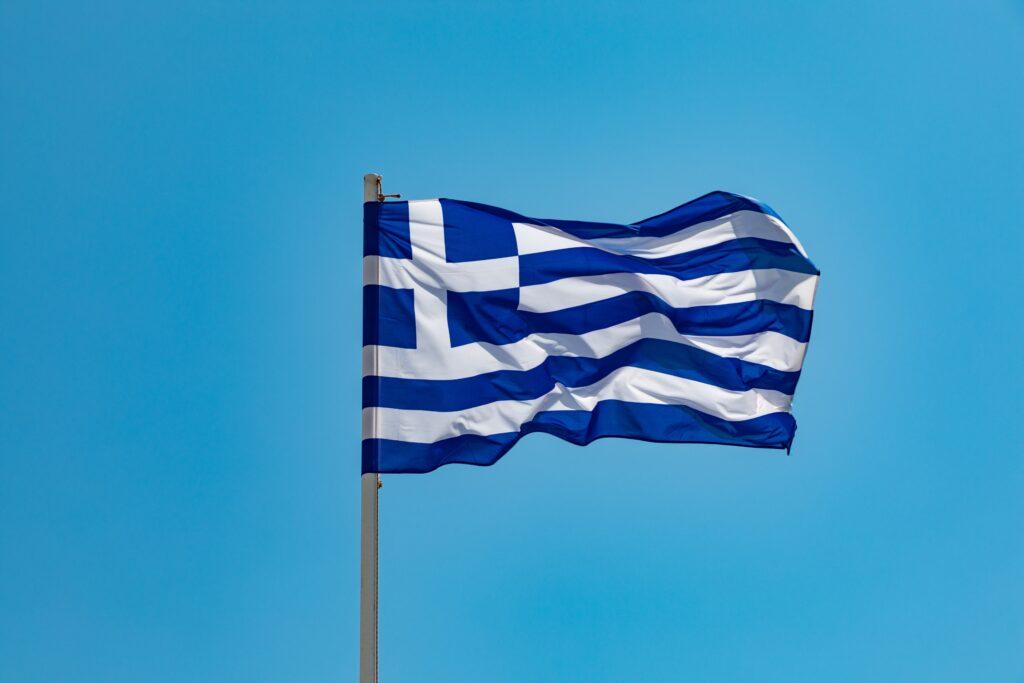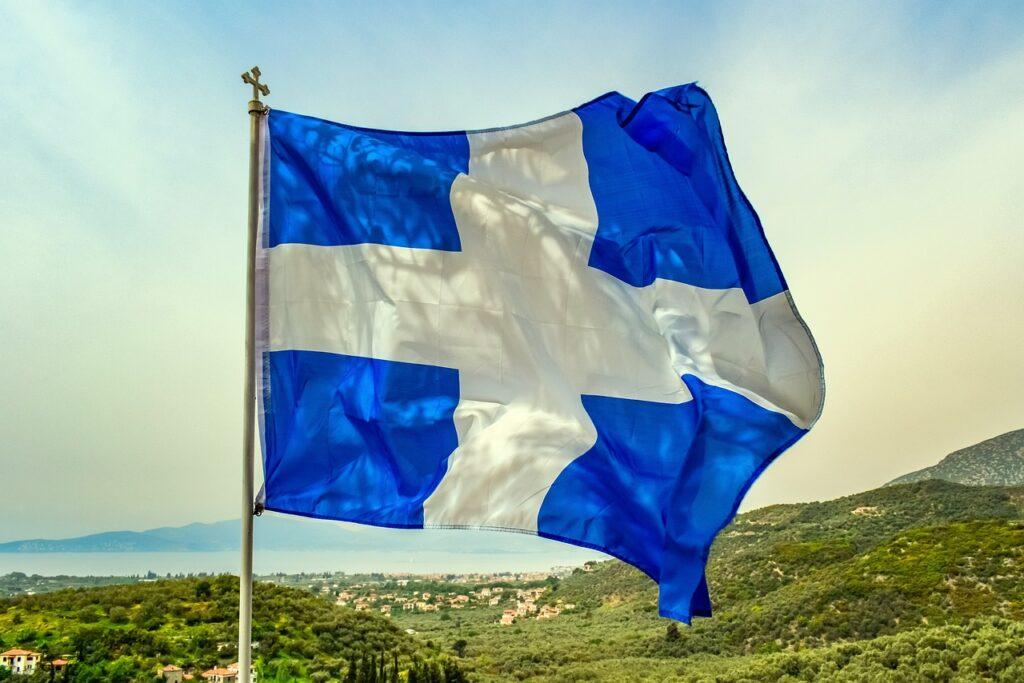The Greece Flag, commonly known as the “Blue and White” or the “Grecian Cross,” is a symbol deeply rooted in the country’s rich history and cultural heritage. Adopted officially on December 22, 1978, the design of the flag embodies the spirit of Greece and reflects its struggle for independence. In this article, we will delve into the various aspects of the Greece flag, exploring its design, colors, and the historical significance it carries.

Contents
Design:
The Greece flag features a cross in the upper left corner, known as the canton, which divides the flag into nine equal horizontal stripes of blue and white. The cross represents the Eastern Orthodox Church, a significant aspect of Greek identity and culture. The blue and white colors are said to symbolize the sky and sea, respectively, connecting Greece to its maritime history and geographical surroundings.

Colors of greece flag
The shades of blue and white used in the Greek flag are officially defined by the Hellenic Government Gazette. The blue is a deep hue known as “Greece blue,” while the white is a bright, clean shade. These colors are not only aesthetically pleasing but also carry historical and cultural significance.

Historical Background:
The history of the Greece flag is closely intertwined with the country’s struggle for independence from the Ottoman Empire. During the Greek War of Independence in the 19th century, a variety of flags were used by revolutionary groups. However, it was not until the establishment of the First Hellenic Republic in 1828 that a national flag was officially adopted. The design has undergone several modifications over the years, with the current version being established in 1978.

Symbolism:
The Greece flag is a powerful symbol of the nation’s identity, independence, and cultural continuity. The blue and white colors reflect the Greek connection to the Aegean Sea and the importance of maritime trade throughout history. The cross represents the dominant religion, Eastern Orthodoxy, which has played a significant role in shaping Greek society and traditions.
National Days and Flag Display Etiquette:
The Greek flag is prominently displayed during national celebrations, public events, and official ceremonies. Greeks take great pride in raising their flag on national holidays such as Independence Day on March 25th, Oxi Day on October 28th, and during various religious festivals. There are specific protocols for the proper display and handling of the flag, emphasizing the respect and reverence attached to this national symbol.
Conclusion:
The Greek flag stands as a powerful emblem, encapsulating the nation’s struggle for independence, cultural heritage, and enduring spirit. Its design, colors, and historical significance make it a source of pride for the Greek people. The flag serves as a constant remi
Frequently Asked Questions (FAQs) – Greece Flag
- Q: Did ancient Greece have a national flag?
A: No, the concept of a national flag as we know it today did not exist in ancient Greece. City-states, however, had their own emblems and symbols. - Q: Were there any common symbols or flags used in ancient Greece?
A: While there was no unified national symbol, various city-states utilized unique emblems, often associated with their patron deities or other significant cultural elements. - Q: Did ancient Greek armies use flags or banners in battles?
A: Yes, ancient Greek armies used various military standards and banners. These were often adorned with symbols representing the city-state or the deity they were fighting for. - Q: Were there any specific colors associated with ancient Greek flags or banners?
A: While there is no comprehensive evidence regarding specific colors, historical texts and depictions suggest that bright colors, such as red, blue, and white, were commonly used. - Q: Were flags used in ancient Greek religious ceremonies?
A: Yes, flags or banners played a role in religious processions and ceremonies. Temples and sanctuaries may have displayed symbols representing the respective deities. - Q: Were there any notable symbols that represented ancient Greek culture?
A: The owl of Athena, the olive branch, and various mythological creatures like the sphinx were symbols associated with ancient Greek culture and could be found on coins, pottery, and other artifacts. - Q: When did the concept of a modern Greek flag emerge?
A: The modern Greek flag started to take shape during the Greek War of Independence (1821-1829). The flag evolved through different designs before the current version was officially adopted in 1978. - Q: What influenced the design of the modern Greek flag?
A: The design of the modern Greek flag was influenced by various factors, including the nation’s struggle for independence, cultural symbols, and the importance of the Eastern Orthodox Church. - Q: How did the ancient Greeks use symbols to represent their identity?
A: Ancient Greeks used symbols on their shields, pottery, and coins to signify their identity, city-state allegiance, or the patron deities they revered. - Q: Are there any surviving ancient Greek flags or banners?
A: Unfortunately, due to the organic nature of materials used in ancient times, no physical flags or banners have survived. However, depictions on pottery and in ancient texts provide some insight into their appearance and use.
nder of the country’s rich history and the values that continue to shape its identity in the modern era.
I’m originally from Manchester (England) but I currently live in New York. I started this travel blog all the way back in 2009 to provide travel advice that wasn’t available in the guidebooks.
Since then I’ve traveled to over 60 countries, a lot of the time, solo. My site is filled with destination guides, things to do, epic itineraries and money-saving travel tips. I hope I can inspire you to see the world!






